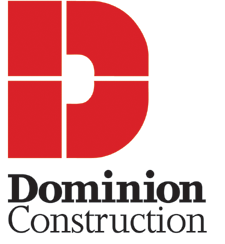GN Testimonial
- “We required a temporary heating system for this project throughout the winter of 1998/99. The building size 110,000 sq ft., consisting of over 140 different rooms.”
“This type of building would require using many burners and fans to try and supply heat and air flow in all of the various rooms. From my experience this was going to be extremely difficult, and a real problem particularly for the Drywalling people. Burners generate a lot of water, combining this with the water from the drywall mud and paint, made for a very humid environment that was detrimental to the curing process. Also the fire hazard, and toxic fumes that are associated with burners was also an issue.”
“When I saw the DryAir’s literature on their portable heating system, I felt it had potential. From what I could see, it utilized a central heating unit that was located outside the facility. The heating unit consisted of a hot water heater and controls (It looked user friendly, and fire free). The heat was transferred to heating units inside the building. These heating units could be situated at various locations within the building.”
“Looking at the system, I felt that we could hook it up to the ductwork inside the building and have the air transferred throughout the building. This would eliminate all the fans that we normally have for moving air when utilizing burners… and it would ensure warm air was circulating in all of the rooms throughout the building.”
“I thought if this system could reduce the amount of water in the building, provide a non-toxic environment for my people and be fire free! It was a system worth giving some consideration.”
“Looking back on the project, utilizing the DryAir system for our heating was a very good decision. It provided everything it was asked to do… and more!”
“Some of the advantages we experienced were:
We did not have to ventilate the building with outside air. This lead to greater energy efficiency.
Normally, when using burners, generation of toxic fumes and the depletion of oxygen levels force us to bring in vast amounts of outside air to keep air quality adequate.
No fire hazard! This eliminated the stress of waiting for a fire to happen. We did not even have to check the system at night or on weekends.
Cleaner air quality! There were no complaints of fumes. The sub trades were very happy with air quality. Many of them did not even know where the heat was coming from. I´m sure this translated into higher productivity.
Lower humidity! This was the most important issue. There were no delays in drywalling and painting. There was no ice buildup on windows or doors and no drywall staining. This was a big accomplishment for a building of this design.
We also utilized the system to heat hoarding for brick layers. This worked just fine.
Very minimal maintenance and supervision!
Worked very well for curing concrete! There was no dusting effect. This can be a real problem with burners if you are not careful.
We were also able to filter the air before it was blown into the ductwork, thus eliminating a lot of the drywall dust and paint dust from lining the duct work. This could not be done with burners.”“By law there are only two places that direct flame burners can be utilized, one is on construction sites and the other is in pig barns. In my opinion, from what I´ve seen with the DryAir system, this type of heating should be the future and direct flame burners should be limited to only pig barns.”
“Overall, we were very impressed with the system. It provided exactly what we needed for our project, a no hassle, fire free, non-toxic environment with consistent low relative humidity air.”
“As a result, at the end of the project, we purchased the two systems we utilized from DryAir.”
“We will be utilizing DryAir for many years to come.”
 Gary Nicholat, Dominion Construction, Saskatoon, SKSite Superintentant, Sherbrooke Nursing Home Project, 1998/99
Gary Nicholat, Dominion Construction, Saskatoon, SKSite Superintentant, Sherbrooke Nursing Home Project, 1998/99

